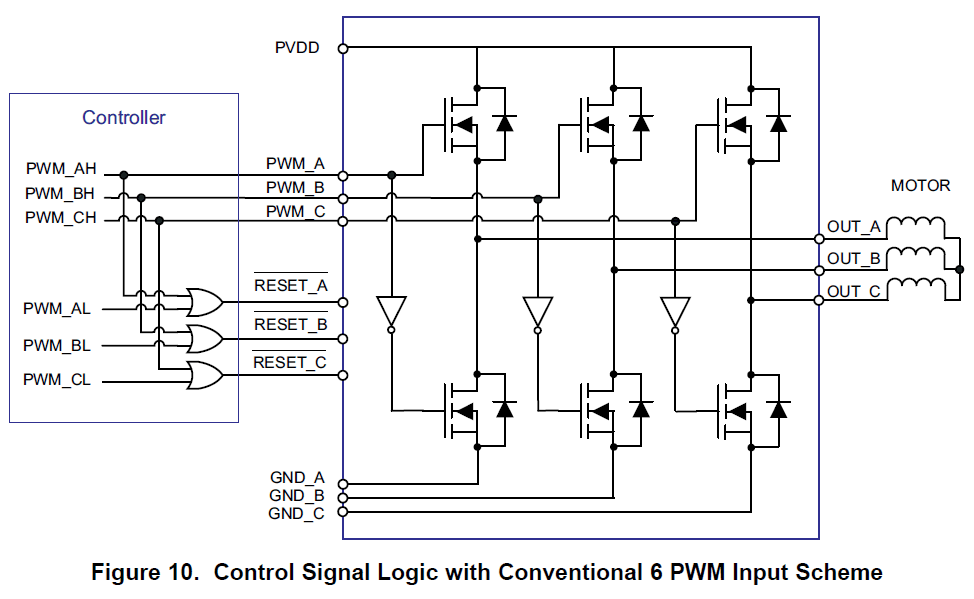Dears
Some question about DRV8312 & DRV8332.
1. In the datasheet, it is written that the deadtime is typ 5.5ns, which is really too short for us, and is it fixed, or could be changed? and how to?
2. We see that DRV8312 also offer the option with conventional 6 PWM input as shown in the figure below, so if we use this 6 pwm input instead like we did before, the deadtime then could be changed by our real application? (Normally from the drive board EEPROM)
3. we see that there are two OC protection method offered by DRV8312: cycle-by-cycle (CBC) current limiting mode and OC latching (OCL) shut down mode. Our concern is that could we have both OC protection together? They both seems to be useful to our application.
4. The last concerning is the thermal relief if using DRV8332, which may need to use with heatsink together. Anyway, our motor rated current is only 3.8A, and in this condition, does the 8332 chip could afford this power consuing without the heatsink? If no, how big size of the heatsink shall we use? Since our application is a very compact design, thus we are very concerning about the component size.
Thanks


